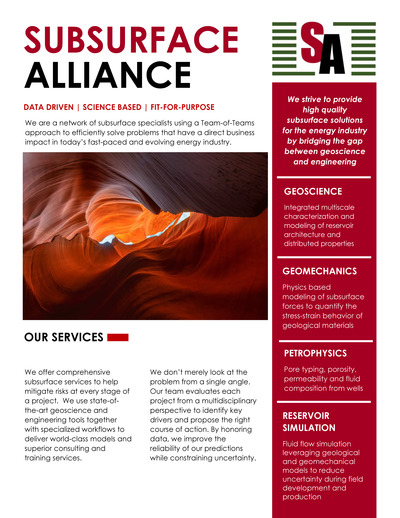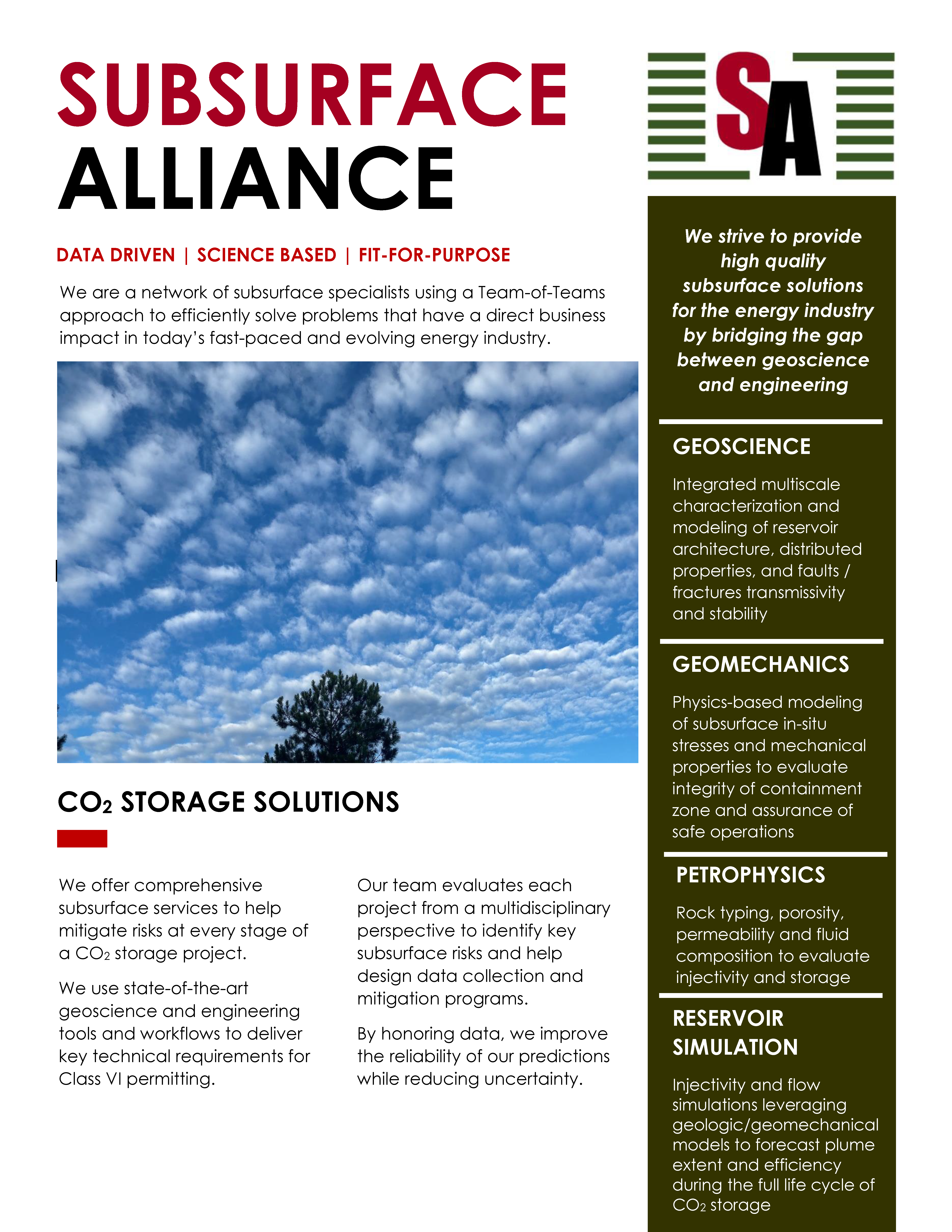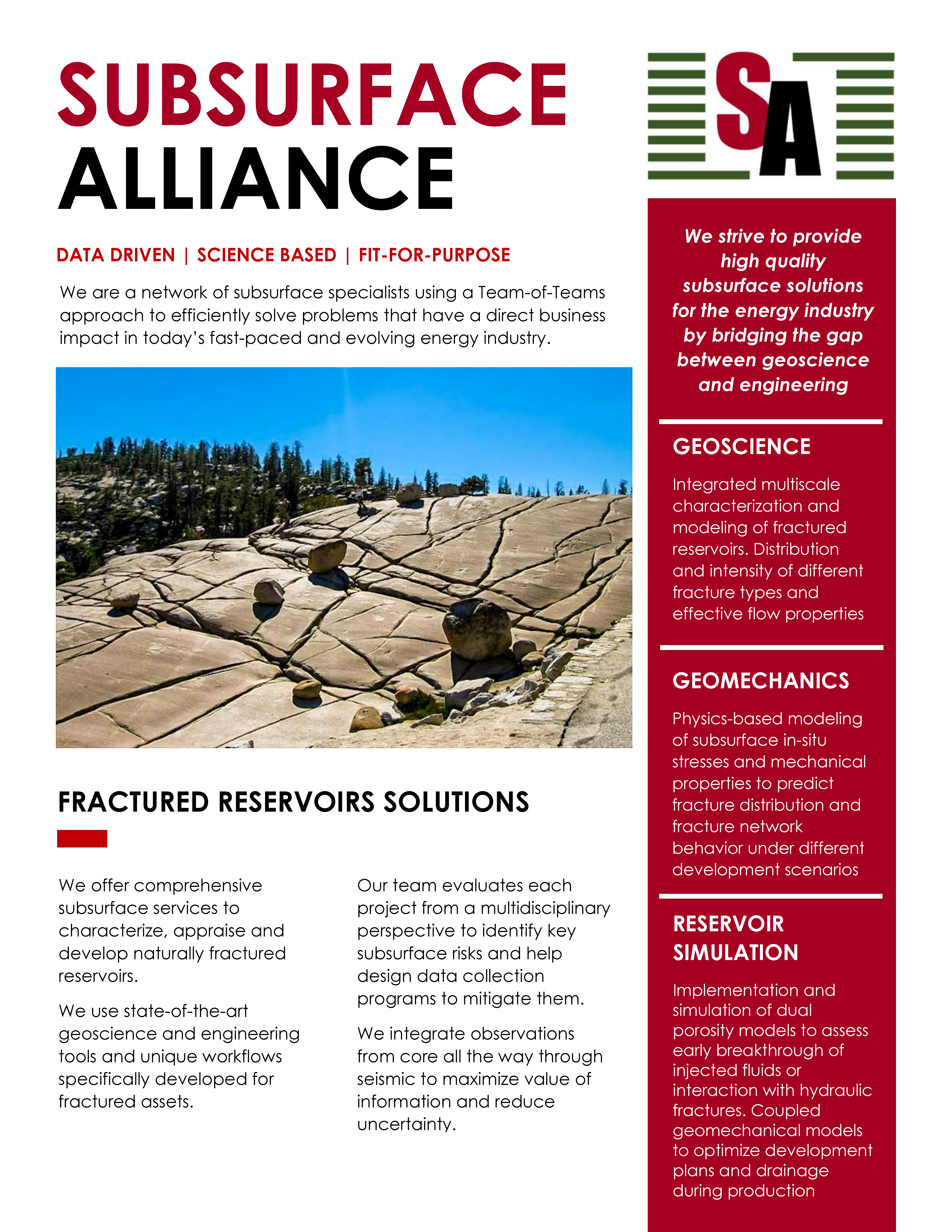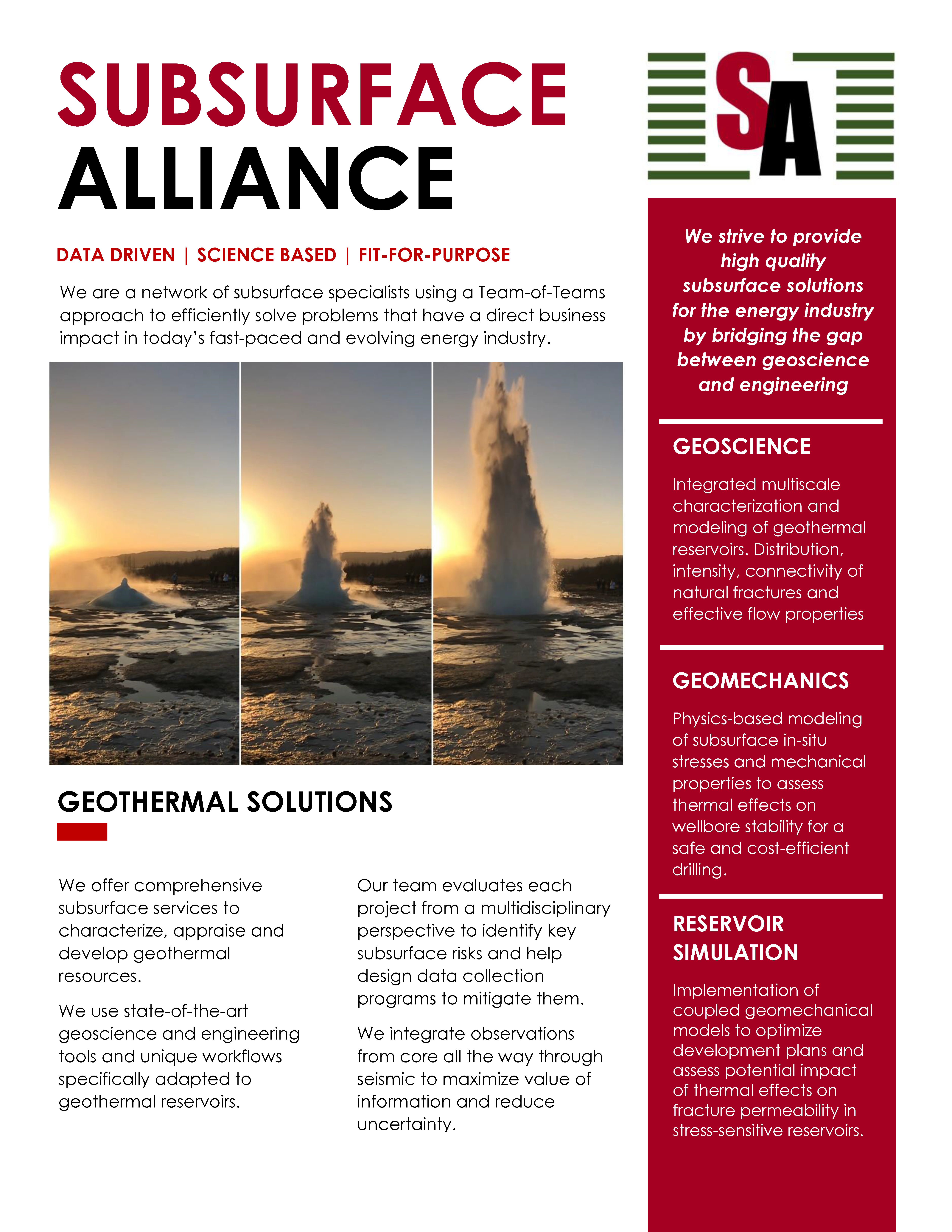- GEOMECHANICS
- CARBON CAPTURE UTILIZATION AND STORAGE
- FRACTURED RESERVOIRS
- GEOTHERMAL
- GEOSCIENCE
- RESERVOIR SIMULATION
Physics based modeling of subsurface forces to quantify the stress-strain behavior of geological materials.
Subsurface services to help mitigate risks at every stage of a CO2 storage project.
Characterization, appraisal, and development of naturally fractured reservoirs.
Modeling of in-situ stresses, characterization of natural fracture networks, modeling induced thermal stresses, and coupling reservoir and geomechanical simulations.
Integrated multiscale characterization and modeling of reservoir architecture and distributed properties.
Fluid flow simulation leveraging geological and geomechanical models to reduce uncertainty during field development and production.
GEOMECHANICS
- Pore Pressure & Fracture Gradient
- Wellbore Stability
- Solids Production Prediction
- Reservoir Compaction
- Fault Stability
- Subsidence
- Laboratory Tests Design & Interpretation
- Natural Fractures Connectivity
- Mechanical Skin Assessment
- Well Integrity Analysis

By applying state-of-the-art numerical methods and workflows, we can tackle geomechanics-related issues at any scale, from well-centered to full-field models.
FRACTURED RESERVOIRS
- Core Characterization
Use core observations to develop a process-based classification which improves predictivity of fractures (intensity and opening) away from well control.
- Borehole Images
Develop rules for enhancing image log interpretation, reducing the number of false positive picks, and improving estimates of fracture density and orientation.
- Modeling: Geomechanics & DFNs
Use quantitative data from core, image logs and numerical models to build Discrete Fracture Network (DFN) models.
- Well Tests & Simulation
We calibrate DFN models using well tests (DST and interference) to fine tune fracture permeability and anisotropy.
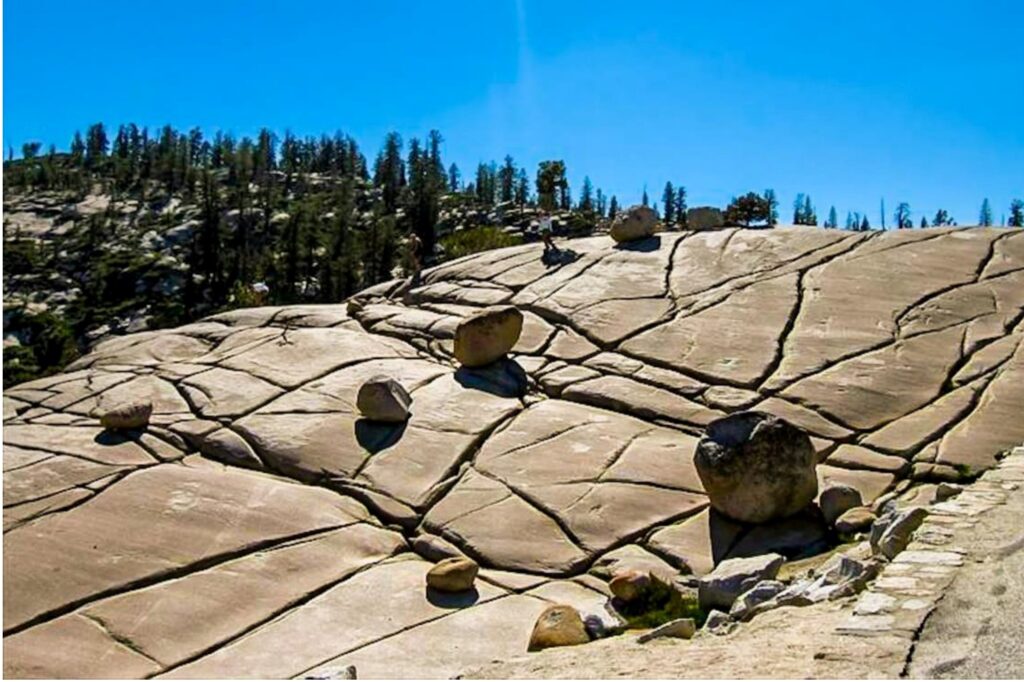
We integrate observations from core all the way through seismic to maximize value of information and reduce uncertainty.
View our Fractured Reservoirs Solutions brochure for more information.
GEOSCIENCE
- Core Description
- Image Log Interpretation
- Integration of Core and Image Logs
- Cap Rock Integrity
- Fault Seal and Connectivity
- Fractures and Karst
- Analogs
- Petrophysics
- Rock Typing
- Geocellular Models
- DFN Models
- Well Test Integration
- Field Trips and Training
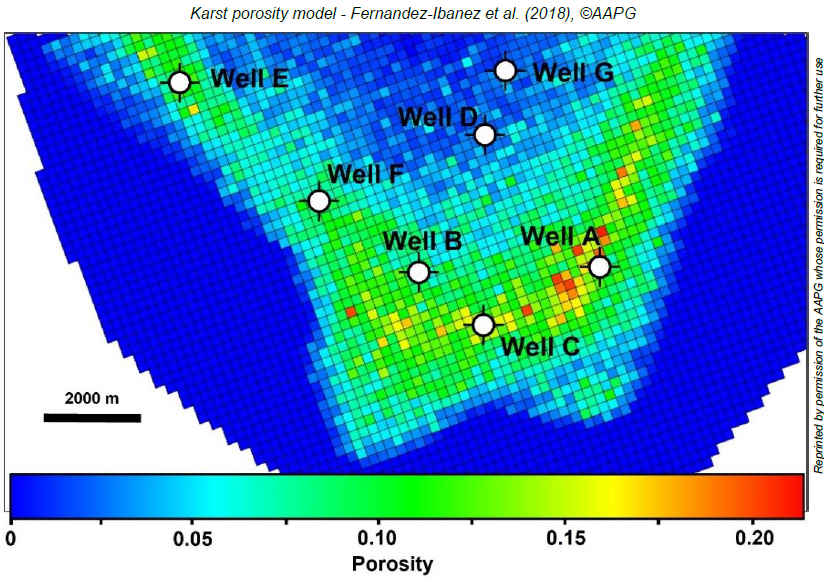
We specialize in characterization and modeling of complex reservoirs with dual porosity and permeability extremes. Our models help manage the risk associated to early breakthrough of undesired fluids and optimize field development programs.
CARBON CAPTURE UTILIZATION & STORAGE
- Faults and Fractures
Characterize faults and fractures to assess the likelihood of reactivation or propagation of fractures.
- Geomechanics
Provide a full subsurface stress and pore pressure (1D or 3D) characterization to assess integrity of the confining zone.
- Well Operability Limits
Assist in calculating the confining zone fracture pressure and assess the physical-chemical characteristics of the injection / sealing zones and its fluids.
- Seal Integrity
Assess seal integrity to evaluate the likelihood of fluid migrations across or along faults.
- Storage Capacity
Can assist in estimating storage and flow capacity of the injection zone using reservoir simulations coupled with geomechanics.
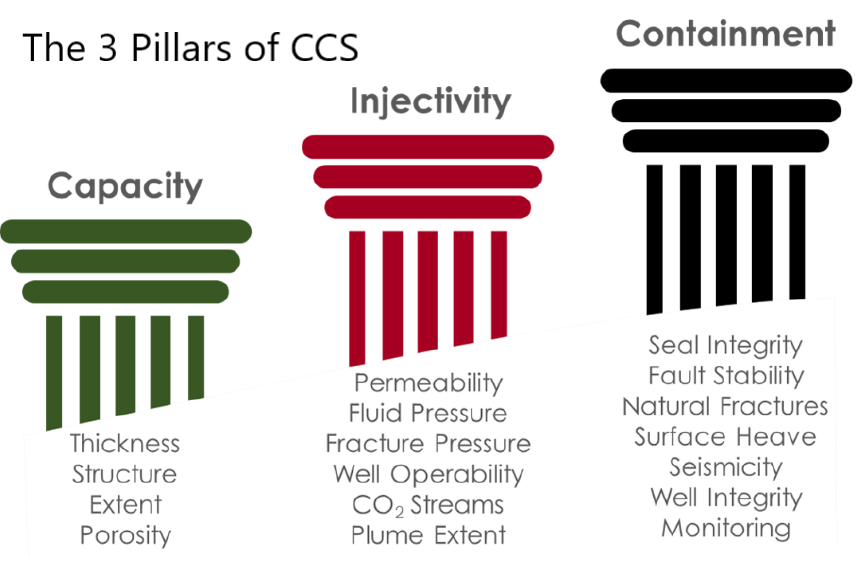
View our CO2 Storage Solutions brochure for more information.
GEOTHERMAL
- In-Situ Stress
Understand and constrain the in-situ stress magnitudes and orientations in geothermal fields is of paramount importance for successful and safe drilling operations in hostile high-temperature environments.
- Natural Fractures
Achieving high injection rates and efficiently circulating fluids between injector and producer often depends on the presence of natural fractures. Characterizing the natural fracture network and its connectivity helps to optimize field development.
- Thermal Stress
Additional stresses arising from the temperature contrast between a cold injected fluid and a hot formation can lead to underestimating the impact of in-situ stresses. Modeling induced thermal stresses can ensure safe drilling operations and predict the impact on stress-sensitive reservoir permeability.
- Simulation
Coupling reservoir and geomechanical simulations can improve reservoir performance prediction while optimizing field development plans. It can also help predict and mitigate collateral effects such as induced seismicity and surface heave.
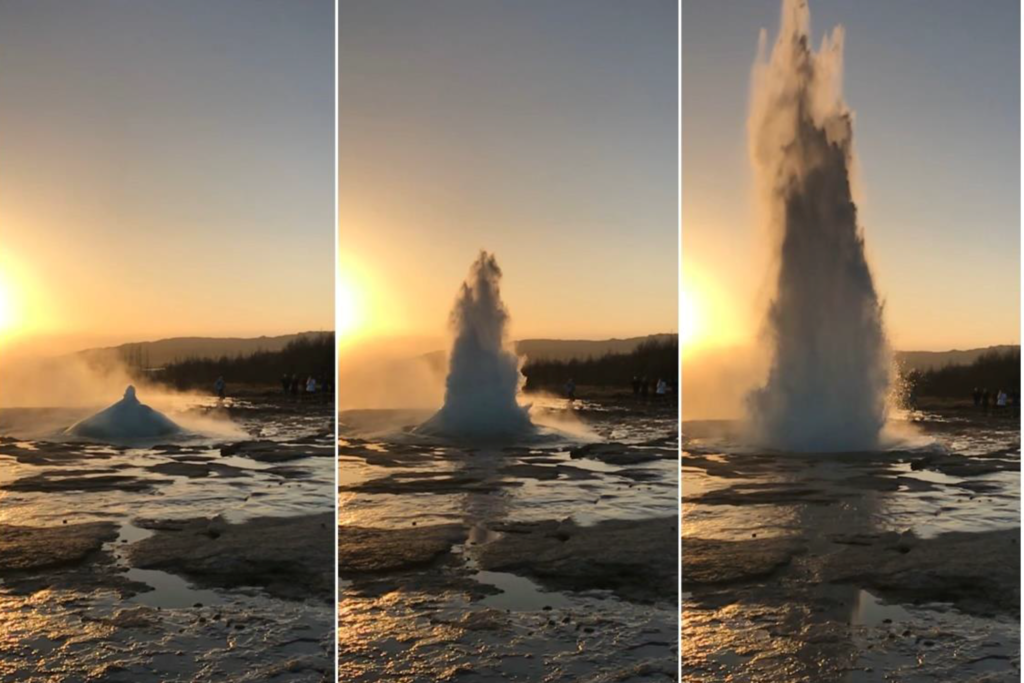
View our Geothermal Solutions brochure for more information.
RESERVOIR SIMULATION
- Black Oil/Compositional
- Dual Porosity
- Coupled Geomechanics
- Rock-Fluid Interactions
- Thermal / Chemical EOR
- CCUS and Geothermal
- Hydraulic Fracturing
- Flexibility and Integration
- Uncertainty Analysis
- Optimization Workflows
- Streamlines
- Exploration-to-Production Simulation
- Experience with Main 3D Numerical Simulators
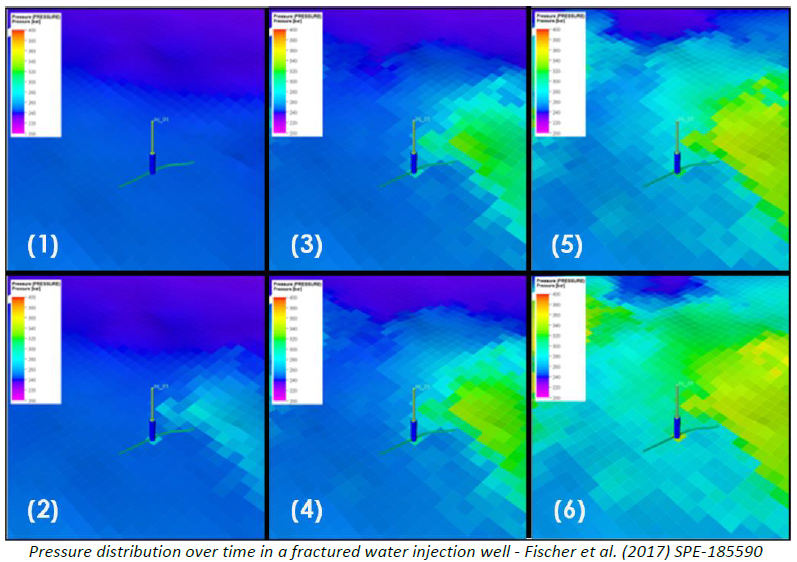
We manage the most relevant physics required for conventional and unconventional reservoirs, while maintaining flexibility and enabling fast decision making.
